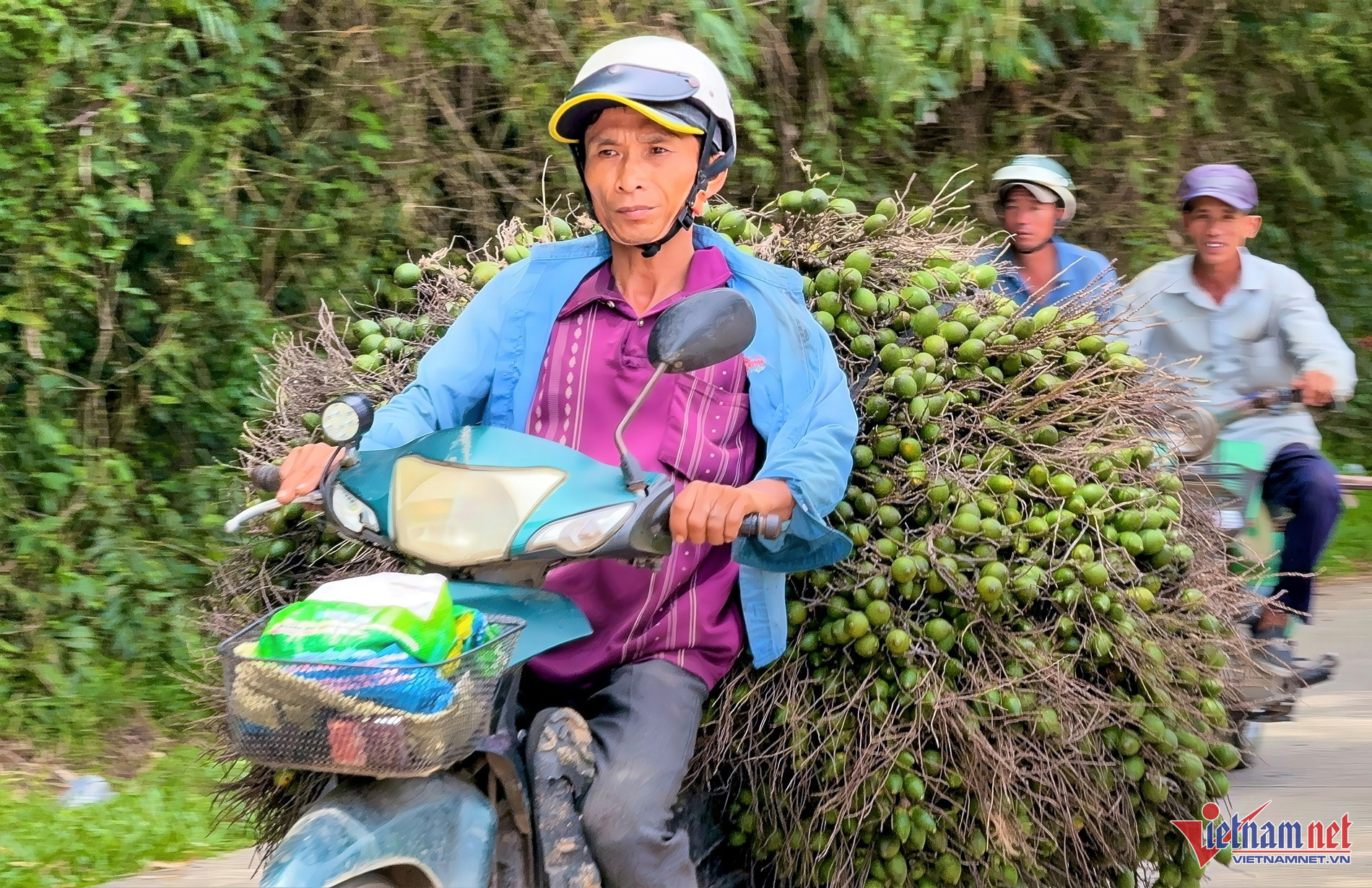
Fresh areca nuts have increased in price recently, reaching an 8-year record high. Growers in Quang Nam and Quang Ngai sold areca nuts at VND40,000 per kilogram at the beginning of the crop, but they later sold at VND80,000-90,000 per kilogram.
Dried areca nut prices soared to VND500,000-570,000 per kilogram.
Analysts said areca prices are surging as Chinese businesspeople are seeking to collect areca in Vietnam. The price increases have helped farmers pocket big money. If selling one ton of areca nuts, farmers earn enough money to buy one tael of gold. Farmers have spent a lot of money to install cameras in their gardens to prevent theft.
Meanwhile, merchants have flocked to every corner of areca growing hamlets of Quang Nam and Quang Ngai to collect fresh areca for export to China where the nut is used to make candy.
However, after making record sales, fresh areca prices have begun sliding. From VND85,000-90,000 per kilogram, the prices have tumbled to VND60,000-70,000. Some areca processing workshops have stopped collecting fresh areca nuts.
The prices have fallen as Chinese businesspeople have collected enough areca. It is highly possible that prices will continue to decrease in the time to come.
Nguyen Nhu Cuong, director of the Ministry of Agriculture and Rural Development’s (MARD) Department of Crop Production, said the rising and falling prices occur regularly with Vietnam’s farm produce exported to China across border gates.
Fresh areca nuts were traded at just VND5,000-7,000 per kilogram the same period last year.
Cuong said the market for areca is very small, with areca nuts mostly exported through unofficial channels to China.
In late 2022, areca prices climbed to a peak of VND60,000 per kilogram, but later plummeted to VND3,000-4,000 per kilogram when the Chinese stopped collecting arecas.
MARD and local authorities have given warnings many times about oversupply if farmers rush to cultivate the same crop. However, price rises and falls still occur, not only with arecas.
Analysts say Vietnamese farmers should learn a lesson from pepper, dragonfruit, and orange sales in the past; this may also occur with durian in the near future.
However, MARD and experts just give advice, while the farmers decide what to grow. Prices must be determined by supply and demand, and state management agencies cannot make a market intervention.
Tam An